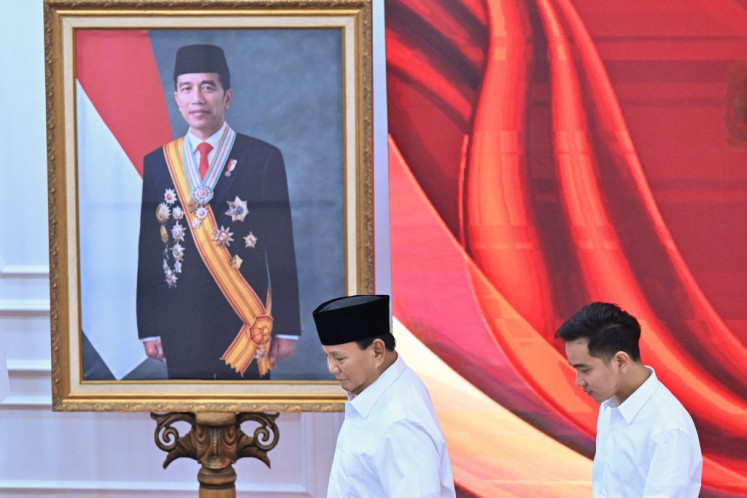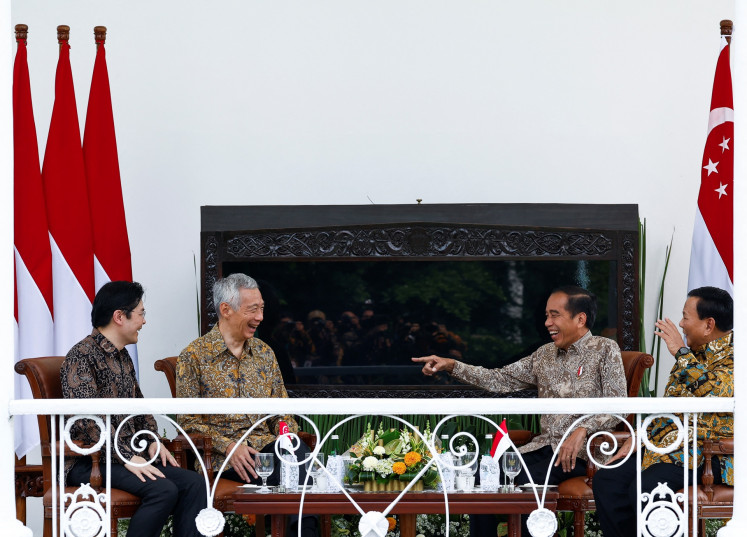[ANALYSIS] SWF: Challenges and impacts on infrastructure financing
Indonesia Investment Authority (INA) serves to manage investments and optimize the value of the managed investments in the long term.
Change Size
![[ANALYSIS] SWF: Challenges and impacts on infrastructure financing](https://img.jakpost.net/c/2020/12/24/2020_12_24_109335_1608742847._large.jpg)
I
ndonesia has established a sovereign wealth fund (SWF) known as the Indonesia Investment Authority (INA). INA's establishment was motivated by the need for large investment in development, especially infrastructure, while domestic funding sources are limited. The INA is based on Law No. 11/2020 on job creation and on government regulations No. 73/2020 and No. 74/2020.
INA serves to manage investment and optimize the value of the managed investments in the long term. Types of investment the INA can make include placement of funds in financial instruments, asset management, cooperation with other parties including trust funds as well as providing and receiving loans.
In general, INA aims to attract medium- and long-term investment of both domestic and foreign origin. INA gets an initial capital of US$5 billion from the government and has a target to attract between $15 billion and $20 billion in funds from abroad. There are two types of funding in INA, namely master funds, and thematic funds directed at certain sectors. Some foreign investors have expressed interest in providing funding to INA, such as United States International Development Finance Corporation (US DFC), Japan Bank for International Cooperation (JBIC), Canada’s Caisse de Depot et Placement du Quebec (CDBQ) and Dutch pension investment company Algemene Pensioen Groep (APG). The potential funds raised from these four investors is estimated at $9.5 billion.
The form of the INA differs from SWFs in several countries in terms of the sources and purpose of the investment. There are 122 SWFs in the world which that into four groups according to their objectives and sources of investment, including natural resources surplus, foreign exchange reserves, pension reserves, and government funding and private investors.
Conventionally, some countries established SWFs to manage a surplus of wealth aimed at anticipating future needs, such as Temasek and the Government of Singapore Investment Corporation (GIC) in Singapore, and the Norwegian Oil Fund in Norway. By contrast, INA was established to obtain funding, especially from foreign investors. Judging from the source of funds, the form of the entity and the characteristics of the investment, the establishment of INA is quite similar to the SWF of India called the National Investment and Infrastructure Fund (NIIF).
INA also differs from existing state-owned investment and infrastructure institutions in Indonesia, such as Pusat Investasi Pemerintah (PIP), and infrastructure financing company PT Sarana Multi Infrastruktur (SMI). INA was established by the omnibus law on job creation and answers directly to the president, and aims to meet the international standards required by potential international investment partners. Meanwhile, PIP is a public service agency and not separated state assets, so the PIP investment scheme is noncommercial in nature and must comply with all state provisions.
As for PT SMI, it must comply with the Corporation Law and the State-Owned Enterprises (SOEs) Law with a separate share of the state assets. Unlike SMI, INA has investment flexibility and the ability to adopt international business practices.
The establishment of INA is a positive catalyst for infrastructure development, because it can reduce funding problems. Based on data from the National Development Board (Bappenas), the infrastructure financing needs for the 2020-2024 period are relatively large, reaching Rp 6.44 quadrillion ($451.38 billion). State and regional budgets are only able to finance as much as 37 percent of the infrastructure needs. Meanwhile, the funding capacity of SOEs, domestic banks and private investors is also limited, so there is a funding gap in infrastructure financing.
Furthermore, SWF become a new source of financing for construction companies. Currently, construction companies are experiencing an increased financial burden and liquidity difficulties. The leverage of SOEs in the construction sector is rising, as indicated by a significant increase in interest-bearing debt and the rising debt-equity ratio.
One of the reasons is that infrastructure development requires huge capital. Other than that, one characteristic of the infrastructure business is a deficit cash flow of infrastructure projects in the early operation. The average cash flow for a new infrastructure project will yield a surplus after eight years of operation. The financial burden has increased amid the COVID-19 pandemic because of a reallocation of infrastructure funds to other budgets and delays in project implementation due to large-scale social restrictions. This condition has causes cost overrun for construction companies.
INA is expected to be an alternative funding for new (greenfield) and existing (brownfield) infrastructure projects. For greenfield projects, the SWF is expected to provide funding in the form of working capital or investment loans with long tenors and low interest rates. Thus, funding for project completion is guaranteed. As for brownfield projects, the SWF is expected to be able to take over infrastructure projects that have started operating. The acquisition can be carried out by asset sale and purchase scheme or through a divestment of infrastructure assets. Therefore, the construction company has room in its balance sheet to develop other projects.
There are, however, several challenges for INA in managing its funds. To attract investment from abroad, INA needs to offer a high dividend yield, which is around 3-4 percent (in US dollar), above the 10-year dollar government bond yield, which was on average 2.6 percent in 2020. Fluctuation in exchange and interest rates and global economic conditions will greatly affect investment in INA. When the rupiah depreciates, the payment of investment returns, especially funds from abroad, will increase.
Another challenge is transparency risk. There is a wide potential for corruption, because INA will manage an exceptionally large amount of funds and has insolvency protection from the government. Therefore, a system of transparency and good leadership, such as professional management governance, good investment strategies and appropriate funding objectives, is very important to maintain the trust of investors.
In the mid- to long-term, INA has potential risk to the current account deficit (CAD). It is due to US dollar outflow stemming from interest and/or dividend payments to the investors. To minimize this risk, the investment should be productive and must be able to increase Indonesia’s exports.
***
The author is a senior regional analyst at Bank Mandiri.









